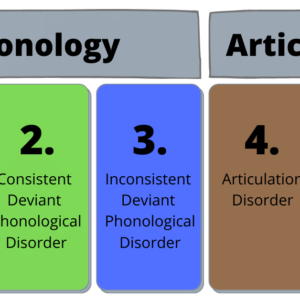Collaborating with Teachers to Make Great Referrals
$22.00

Course Type: Video – 1 1/2 hours
ASHA Course Code: Service Delivery Associated with Speech, Language, Hearing and Related Disorders – 7010
We have all been there: whether you are brand new to a campus, scrambling to form relationships with campus staff as the referrals stream in, or you seem to encounter a busy, overworked educator each time you stop in to discuss special education referrals, collaborating can be a tall order. This course offers support! With a streamlined RTI process, you can better engage teachers and campus staff.
Outcomes from the research on the improved referral process included:
- Reduced caseloads
- Improved relationships with teachers
- Reduced evaluations that resulted in disqualification
- Improved referrals that we receive from teachers
Additional Information
| Population | School Age |
|---|---|
| Topics | SLP Professional |
| Duration | 1.5 hours |
| Credit | .15 Continuing Education Units |
| Format | Video |
Financial Disclosure: Scott Prath, M.A., CCC-SLP is a salaried employee of Bilinguistics. Bilinguistics receives royalty payments for online courses.
Non-Financial Disclosure: Scott Prath does not have any non-financial relationships to disclose.
This presentation helped to demystify the Response to Intervention (RTI) process and enabled effective building of collaborative relationships. The tools provided in this presentation aimed to reduce workloads to decrease unnecessary referrals and to increase support within the schools.
Tangible steps are described to make this a reality on your caseload. The greatest difficulties that educational professionals face are presented. The history of RTI (Response to Intervention) is discussed so that we can gain perspective on how to positively influence it. A case study exhibiting the use of over 40 referral documents is followed to demonstrate the ease and power of collaborating with teachers.
Participants will be able to:
View RTI from a broad perspective
Introduce a macro approach to looking at the results of RTI and further driving accurate assessment
Evaluate the make-up of students in special education
Show how RTI can reduce caseload work, better identify students, and reduce special education spending
Time-Ordered Agenda
05 minutes: Introduction
10 minutes: Goals of RTI Process
10 minutes: Stakeholders’ Perspectives
10 minutes: RTI Defined and History of RTI
10 minutes: Are the right students on your caseload?
05 minutes: Evaluation of a suburban district
05 minutes: Supporting our colleagues
10 minutes: Case Study of a Caseload
05 minutes: RTI Problem Solving Method
10 minutes: Introduction of a simple RTI packet
10 minutes: Dynamic Assessment
Need CEUs?

 Share
Share
 Tweet
Tweet
 LinkedIn
LinkedIn
 Pin
Pin
 Email
Email






